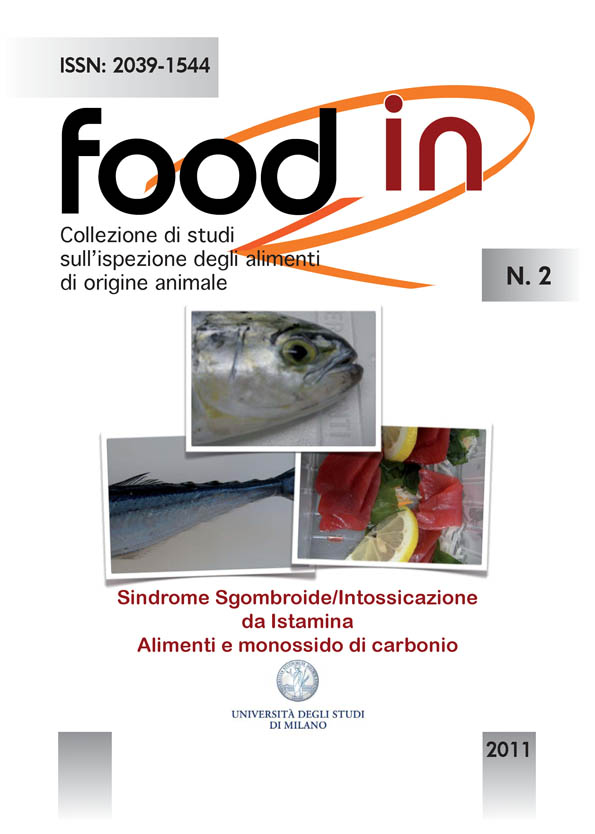Alimenti e monossido di carbonio
DOI:
https://doi.org/10.13130/2039-1544/1553Parole chiave:
carbon monoxide, fish, meat, legislationAbstract
The use of carbon monoxide (CO) in the packaging of meat and fish has generated considerable debate. CO is a colourless, odourless and tasteless gas; it is generated by incomplete combustion of carbon-containing materials.In organisms a small amount of CO is formed naturally through the breakdown of haemoproteins and this CO is found in foods.
Fresh meat colour is defined by the relative amount of the three derivatives of myoglobin. Deoxymyoglobin and oxymyoglobin, which are both in the reduced state, can oxidize to metmyoglobin, which has a dull brown colour.
Although metmyoglobin can be slowly converted to deoxymyoglobin by enzyme-mediated reactions termed metmyoglobin-reducing activity, this ability dissipates during storage. Bacterial growth is also a major cause of fresh meat discolouration. Bacteria cause a reduction in oxygen concentration and consequently modify the colour of the meat pigment.
Carbon monoxide binds with myoglobin to produce a bright red coloured pigment, carbonilmyoglobin, which is much more stable against oxidation than oxymyoglobin due to the stronger binding of CO to the iron–porphyrin site on the myoglobin molecule.
Carbon monoxide, in combination with nitrogen and carbon dioxide, is used for fresh meat packaging in USA, Norway, Australia, New Zealand, Taiwan and Vietnam. In the USA, modified atmospheres with low levels of CO, up to 0.4%, are used commercially for meat packaging, while filtered smoke containing 30–40% CO is permitted for pretreatment of fish.
The use of tasteless filtered smoke is being applied as an alternative to CO to treat fish. Tasteless smoke is also of concern in that there appears to be no reliable way to distinguish between products treated with CO and those treated with tasteless smoke. There are ongoing studies on the possible use of CO in fish slaughter.
Dowloads
Pubblicato
Fascicolo
Sezione
Licenza
Gli autori che pubblicano su questa rivista accettano le seguenti condizioni:
Gli autori mantengono i diritti sulla loro opera e cedono alla rivista il diritto di prima pubblicazione dell'opera, contemporaneamente licenziata sotto una Licenza Creative Commons - Attribuzione che permette ad altri di condividere l'opera indicando la paternità intellettuale e la prima pubblicazione su questa rivista.
Gli autori possono aderire ad altri accordi di licenza non esclusiva per la distribuzione della versione dell'opera pubblicata (es. depositarla in un archivio istituzionale o pubblicarla in una monografia), a patto di indicare che la prima pubblicazione è avvenuta su questa rivista



